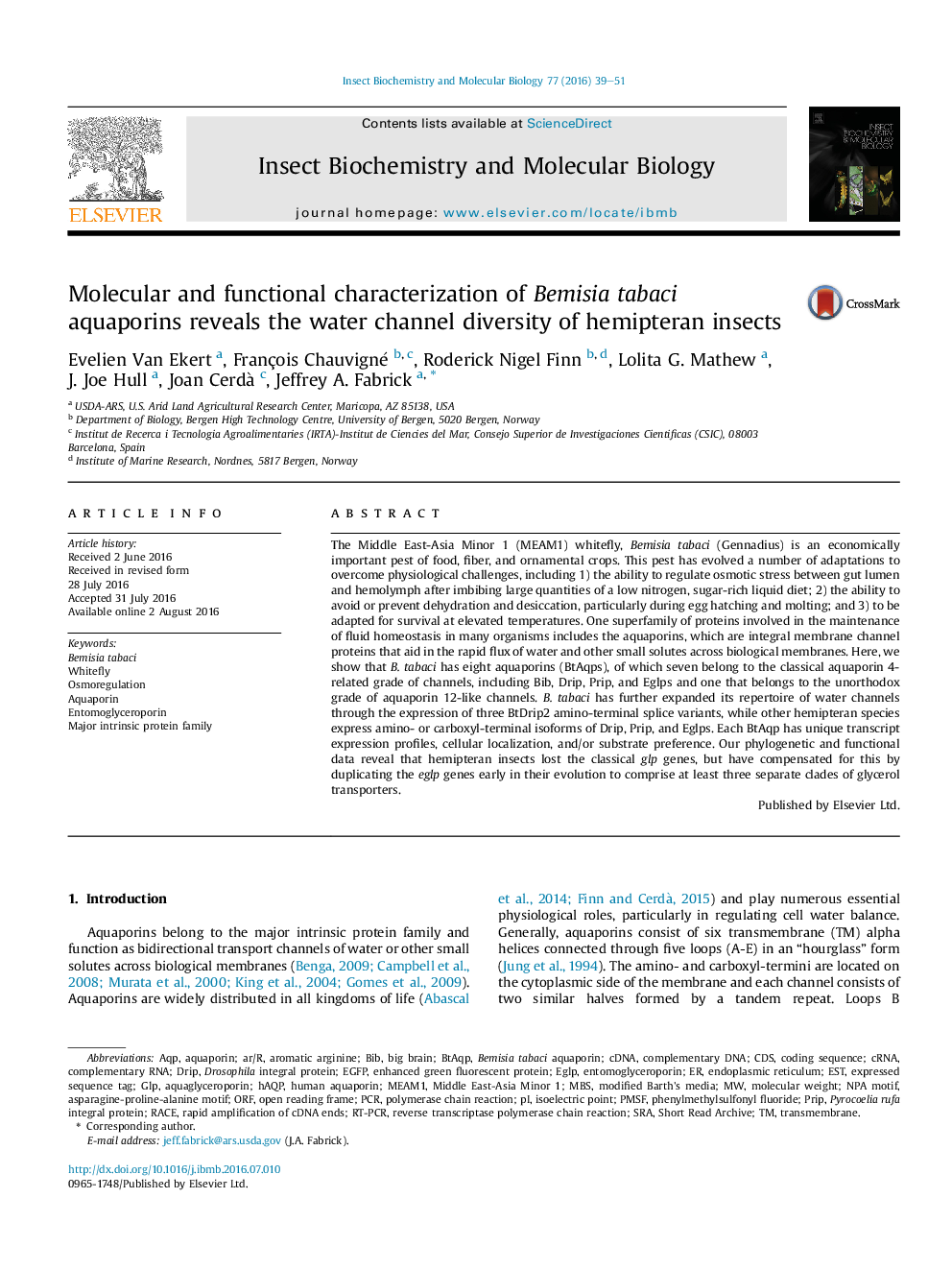| کد مقاله | کد نشریه | سال انتشار | مقاله انگلیسی | نسخه تمام متن |
|---|---|---|---|---|
| 1981924 | 1539475 | 2016 | 13 صفحه PDF | دانلود رایگان |
• Eight unique aquaporins are present in the Middle East-Asia Minor 1 (MEAM1) cryptic species of Bemisia tabaci.
• BtAqps belong to six phylogenetically distinct groups, including Bibs, Drips, Prips, EglpAs, EglpBs, and Aqp12Ls.
• Hemipterans lost classical glp genes associated with glycerol transport, but compensated by evolving several Eglp channels.
The Middle East-Asia Minor 1 (MEAM1) whitefly, Bemisia tabaci (Gennadius) is an economically important pest of food, fiber, and ornamental crops. This pest has evolved a number of adaptations to overcome physiological challenges, including 1) the ability to regulate osmotic stress between gut lumen and hemolymph after imbibing large quantities of a low nitrogen, sugar-rich liquid diet; 2) the ability to avoid or prevent dehydration and desiccation, particularly during egg hatching and molting; and 3) to be adapted for survival at elevated temperatures. One superfamily of proteins involved in the maintenance of fluid homeostasis in many organisms includes the aquaporins, which are integral membrane channel proteins that aid in the rapid flux of water and other small solutes across biological membranes. Here, we show that B. tabaci has eight aquaporins (BtAqps), of which seven belong to the classical aquaporin 4-related grade of channels, including Bib, Drip, Prip, and Eglps and one that belongs to the unorthodox grade of aquaporin 12-like channels. B. tabaci has further expanded its repertoire of water channels through the expression of three BtDrip2 amino-terminal splice variants, while other hemipteran species express amino- or carboxyl-terminal isoforms of Drip, Prip, and Eglps. Each BtAqp has unique transcript expression profiles, cellular localization, and/or substrate preference. Our phylogenetic and functional data reveal that hemipteran insects lost the classical glp genes, but have compensated for this by duplicating the eglp genes early in their evolution to comprise at least three separate clades of glycerol transporters.
Figure optionsDownload high-quality image (290 K)Download as PowerPoint slide
Journal: Insect Biochemistry and Molecular Biology - Volume 77, October 2016, Pages 39–51
